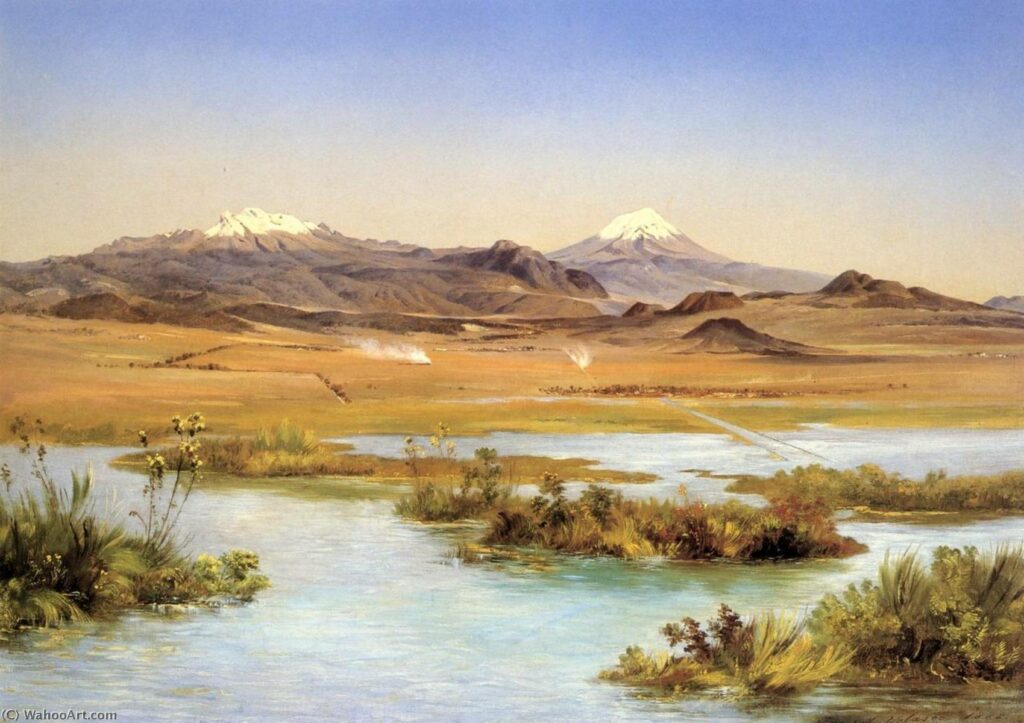Despite the constant and recent activity of Popocatépetl, which has generated ashfall in neighboring states such as Puebla, State of Mexico, and Mexico City, as well as the emission of incandescent materials, this 730,000-year-old volcano has been a historical source of artistic inspiration for various painters such as Gerardo Murillo, José María Velasco, among others.
Out of the more than 2,000 volcanoes in Mexico, Popocatépetl is the second largest – after Pico de Orizaba – with a height of 5,426 meters above sea level. Its location on the outskirts of the Valley of Mexico makes it one of the most representative in the country.
Together with the Iztaccíhuatl volcano, Popo has been portrayed in painting and photography on multiple occasions. The presence of these colossal mountains has also inspired literary works, such as some verses by Mexican writer and poet José Emilio Pacheco.

These two volcanoes were also described by historian Miguel León-Portilla as “The silhouettes, snow-capped at the top, of the White Woman, Iztaccíhuatl, and the Smoking Mountain, Popocatépetl, are drawn in the blue sky during the few clear days we still have in the Valley of Mexico. They are she and he, sentinels of the ancient grand Tenochtitlán, now transformed into a megalopolis, said to be the largest on the planet.”
Popocatépetl has been depicted since pre-Columbian times, and some of its eruptions have also been recorded. According to Arqueología Mexicana, the Telleriano-Remensis Codex records that in the year 2 cane or 1507, there was a solar eclipse and an earthquake, and in the year 4 house or 1509, the volcano erupted.
In more recent times, José María Velasco, a painter from Temascalcingo, State of Mexico, was one of the landscape artists who created the most paintings of Popocatépetl. One of his most representative works is “Valle de México desde las Lomas de Tacubaya” (1894), which belongs to the permanent collection of the National Museum of Art of the Fine Arts and Literature Institute (INBAL).
Another Mexican painter, who was also influenced by Japanese culture, Luis Nishizawa, captured the grandeur of this popular volcano. This graduate of the Ancient Academy of San Carlos and exponent of muralism has in his collection the canvas “Popocatépetl” (1994).

One more artist, who combined arts with geology and had a passion for volcanology, Gerardo Murillo, popularly known as Dr. Atl, framed the smoking snow-capped peak in “Popocatépetl” (1934), which is available at the Blaisten Museum. It is worth noting that this painter also created several paintings of the Paricutín volcano, which emerged in 1943.

Another foreign artist included in this list was the German August Löhr, recognized for his canvases and murals. “Paisaje nocturno del Valle de México” (1919) is a work in which he portrays a countryside landscape, which is guarded by the Popocatépetl and Iztaccíhuatl volcanoes. This canvas can be appreciated at the Soumaya Museum.
Like these, a diversity of artistic works have been created throughout history. Both nationals and foreigners have turned to the inspiration offered by these immense mountains that guard the Valley of Mexico.
TYT Newsroom


